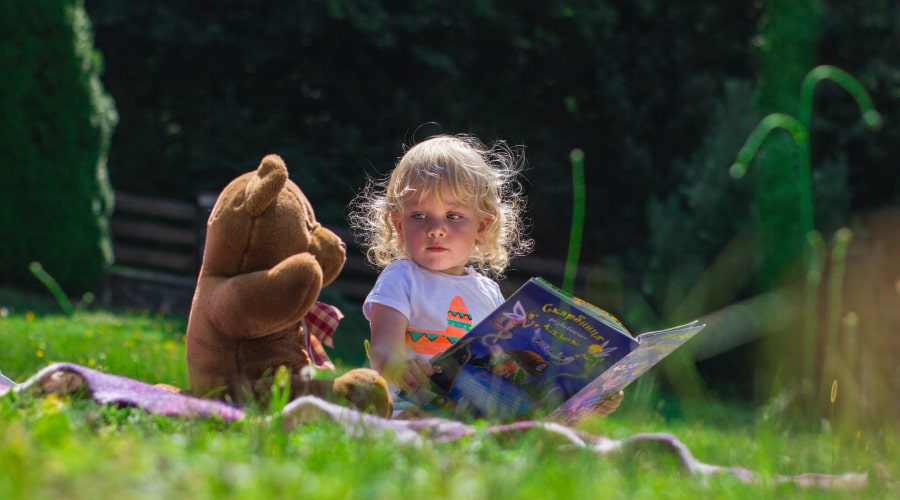settings
children
With Famly since
Sometimes, all it takes to ruin your weekend is a teddy bear.
If you’ve spent any time in early education, you’ve probably heard of take-home teddies. There are different ways to do it, but most often, you’ll send a teddy bear home to children’s families, and the parents send back a write-up of the bear’s big weekend to share with everyone else.
It’s certainly a cute concept. But sometimes, the little teddy’s visit might not be such a treat for parents.
Becky Watanabe of Acorn Early Years has worked in early education for 26 years. And for as long as she’s been in the sector, she’s run into take-home teddies. But as she reflects, it might be time to reexamine why (and how) we use them.
“Do I like take-home teddies and the concept behind them, or is it just a thing that we do? Have we been doing it so long that we’ve lost sight of their value?” she says. “I think we’ve really got to think about the intent behind the experience.”
So why might a plushy little teddy be causing headaches?
Well, as you’ll see down below, it’s not the bear that’s the problem. It’s the way we use them.

Teddy bears are great — sending them home might not be
First thing’s first: I’m not here to write a hit piece about teddy bears.
Teddies are more than just cuddly faces — they’re stuffed to the seams with learning opportunities. So to understand how we can make the most of these plushy pals in early education, it’s worth looking at the moving parts of play with stuffed toys.
From a developmental perspective, here’s what our furry friends have got going on:
- They’re fascinating sensory playthings. Stuffed toys are soft to the touch, squishy and smooshy to curious hands, fun to look at, and often carry the comforting scent of home, or another familiar place. In that way, they’re great outlets for children to give their five senses a spin.
- Stuffed toys help children deal with anxiety. “Babies and toddlers depend on others’ faces to take social cues, and know whether they’re in a safe environment. A teddy’s constant smile can really help children feel like they’re in a safe, happy place,” Becky says.
- They’re great for social-emotional learning. Teddies are common partners in pretend play, as children give them personas and characteristics, and use them to role-play or explore imaginary situations. They often become someone children need to care for, which helps develop empathy.
- Chatting with bears boosts language development. During pretend play, stuffed toys are uncritical listeners, and good conversational partners. “Children can practice speech with teddies and not have to worry about saying something wrong, or being corrected. The teddy knows what they’re saying, and its answer is the child’s own voice too,” Becky explains.
- Teddy bears are awfully cute. Just look at that little nose!
So, teddies and similar stuffed toys are really valuable friends for children. But sometimes, because of the way we approach take-home teddies, those benefits can fall out of focus.
What makes the bear a burden?
If we don’t do take-home teddies in the right way, it’s easy for families to get caught up in complications, rather than enjoying the benefits of the bear’s company.
Let’s look at why a take-home teddy might be troublesome:
- Parents might not feel comfortable sharing their home life. Maybe things are unstable at home, or you’re intimidated by the idea that other children’s parents might have bigger, cleaner homes. Sharing your home life and documenting it in a class book can feel overwhelming for any number of reasons.
- Parents might not get the developmental benefits of teddy bears. Communicating why bears are so good for children can help parents appreciate and zero in on those benefits. But if we don’t make that clear, documenting the bear’s deeds can become just another chore on a busy weekend.
- Recording the bear’s adventures can hit a language barrier. If parents speak a different language at home, it can be intimidating to have to write up a fun recap of the bear’s weekend, especially knowing that’ll be displayed next to the writing of native speakers.
- The pandemic introduced some extra hygiene concerns. As we’re all recovering from 18 months of germ anxiety, a communal bear shared by 30 toddlers might seem more like a plague rat than a cuddly pal. Especially with an immunocompromised family member at home, sending around a shared teddy can get tricky.
- Sharing the bear’s adventures can spark jealousy. Some educators might send Barnaby Bear off as a holiday companion with children. But seeing photos of Barnaby on the beach in Mallorca doesn’t feel so good if your own family couldn’t afford a trip like that.
- Focusing on other families’ lives can be tough for some children. If you’re a child in foster care, or things aren’t so happy in your own home, a book full of other children’s comfortable home lives can spark feelings of anxiety and loneliness.
The big ideas

How you can make your take-home teddy a treat
Improving everybody’s take-home teddy experience isn’t all that complicated. With a few tweaks, your bear can become a bridge toward better relationships with parents at home, and a useful tool for engaging children with everyday activities and pretend play.
The one big thing, Becky says, is making sure your take-home teddy doesn’t put pressure on parents.
“You don’t want to make parents feel like they have to do homework,” she says. “It’s really about enabling parents to share a moment with their child. Teddies can be a great tool for that, whether you’re making up a story, reading a book, or using that teddy to talk about emotions or feelings.”
Here are three ways you can make your take-home teddy better for parents and children alike:
- Give the bear a specific purpose on its visit. You might send Barnaby Bear home because he needs someone to read him a story at night, or to show him how we brush our teeth, or how we get dressed for the weather in the morning. Having some direction means parents don’t have to come up with something to do, and can help them get more engaged in little daily rituals with their children (and Barnaby).
- Offer some developmental context or resources for parents. If you talk with parents about the specific pedagogical benefits of teddies and stuffed toys, it can help them appreciate why you’re doing this, and to focus on those aspects in their children’s play.
- Ditch the big book of the bear’s adventures. “I’d prefer to use the Famly app for parents to share their experiences directly with us practitioners, rather than putting it in a public book,” Becky says. “That way, we can reflect on the activity, but parents don’t feel the pressure of being compared to other families.”
Try learning journals for free
Add observations, and build digital learning journals to share with families instantly. All with your completely free 14-day trial.
Get started









